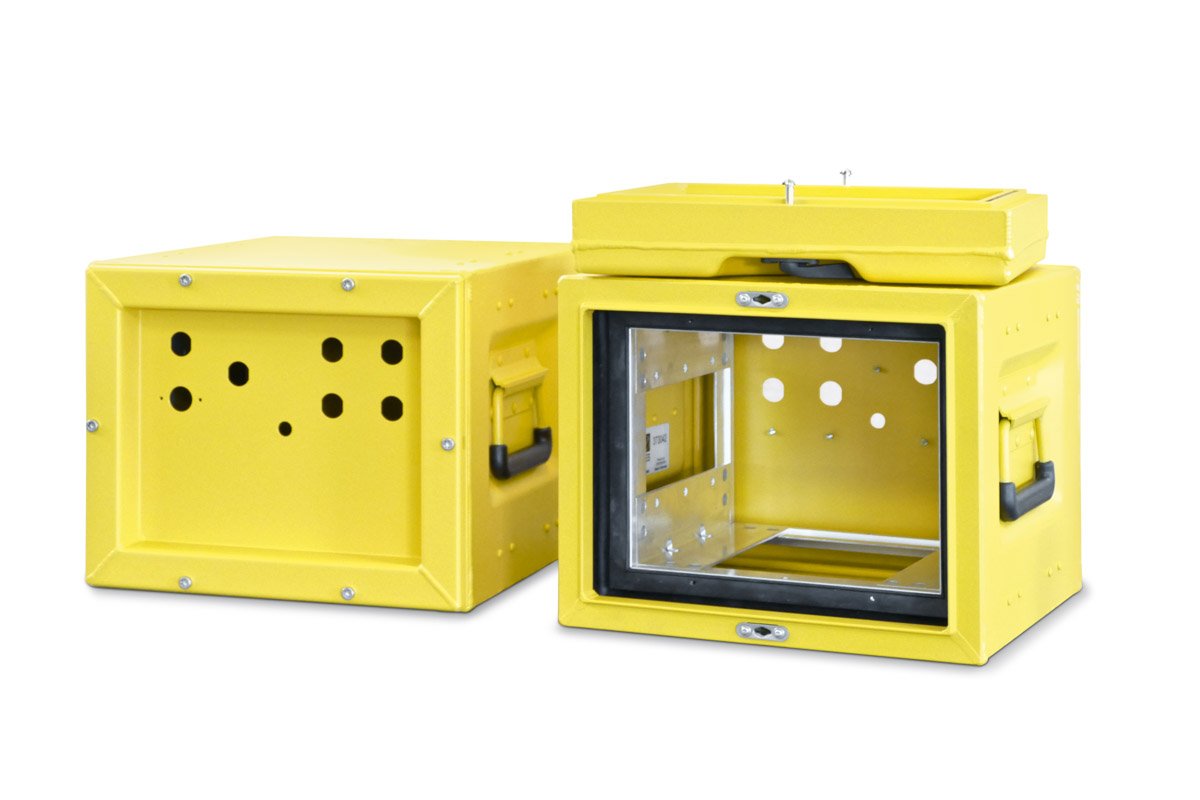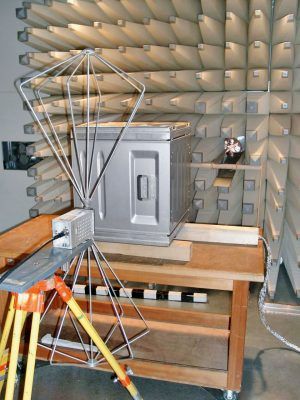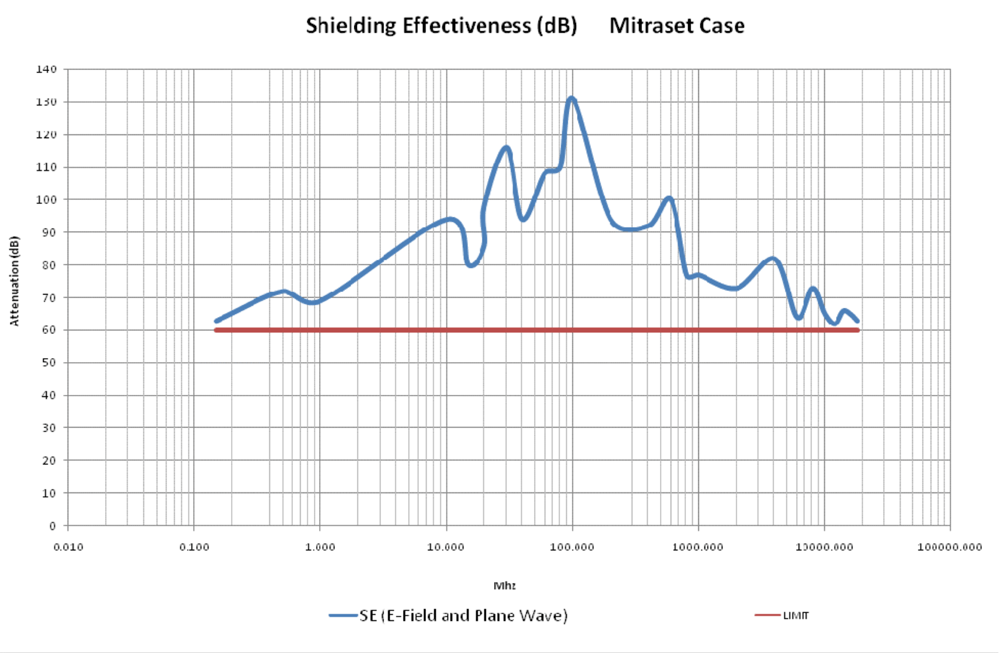WHAT ARE THE EMI BENEFITS OF CHOOSING A ZARGES CASE?
EMI effectively can be addressed in very complex terms but for most applications EMI shielding requires a Faraday cage around the equipment requiring protection. Any gap in the cage will allow some leakage and if the case contents are susceptible to that frequency range or if sensitive data can be compromised by the emission of those frequencies, the EMI effectively is inadequate.
Aluminum offers many advantages over typical composite case construction. It can weather extreme temperatures, resist impact without cracking, and will not rust or corrode over time. ZARGES cases are free of ferromagnetism and are an excellent conductor of electricity and heat. Our Mitraset line of aluminum rackmount cases for electronic installations are inherently shielded against EMI.
Aluminum cases can be fabricated with welded or formed seams to eliminate most radiation leakage with little additional cost in manufacturing processes or material content. Plastic and composite materials require some type of conductive supplement to the nonconductive basic materials and these supplements significantly increase material/labor costs. These supplemental materials are difficult to employ in the case manufacture and often easily damaged when the case experiences rough handling environments or temperature extremes.

WHAT EMI BLOCKING FEATURES DO ZARGES CASES HAVE?
The Mitraset and K475 cases passed the shielding requirements of 60dB from 150kHz to 18GHz. The tests were performed at Chomerics, Inc. of Woburn MA. The assessment determined that the Mitraset does comply to the certain requirements set forth in IEEE STD 299.
As a custom option, the Mitraset and K475 cases can be fitted with a EMI shielding gasket made from Chomerics CHO-SEAL 1285, which is silver-plated aluminum in silicone and provides additional shielding between 90-110 dB.

WHAT IS EMI/RFI?
Electromagnetic interference (EMI), or radio frequency interference (RFI) when in radio frequency, is disturbance that affects an electrical circuit due to either electromagnetic induction or electromagnetic radiation emitted from an external source. The disturbance may interrupt, obstruct, or otherwise degrade or limit the effective performance of the circuit. These effects can range from a simple degradation of data to a total loss of data. The source may be any object, artificial or natural, that carries rapidly changing electrical currents, such as an electrical circuit, the Sun or the Northern Lights.
WHAT IS A FARADAY CAGE?
A Faraday cage is an enclosure formed from conductive material or a mesh of such material that blocks external electric fields. Electricity is channeled along the surface, maintaining a constant potential and preventing penetration into the interior. The concept was demonstrated in 1836 by the English scientist Michael Faraday, for whom the device is named.
The principle of operation relies on the redistribution of charges within the conducting material. When exposed to an external static field, these charges arrange themselves in a way that cancels the field inside the enclosure. This effect allows Faraday cages to shield sensitive electronic equipment from lightning strikes and electrostatic discharges.
Faraday cages also attenuate electromagnetic radiation when the conductor is sufficiently thick and any openings are much smaller than the wavelength of the radiation. Grounding the conductive layers dissipates induced currents from both external and internal sources, further enhancing protection. As a result, electromagnetic interference is greatly reduced, and the transmission or reception of radio waves within the cage is heavily blocked or diminished.
The above definitions are sourced from Wikipedia and released under CC-BY-SA


